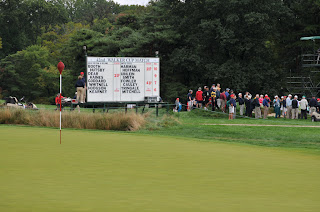Penn State Daily Collegian Talks Turfgrass
January 18, 2013 in 2-year, 4-year, Alumni, Extension, Teaching
Turfgrass management for those who ‘lives to work’
By Lauren Ingeno
Collegian Staff Writer
During the late 1920s, the superintendent at Merion Golf Club was facing turfgrass problems that he was not equipped to deal with.
His solution? Joseph Valentine drove to State College, entered the office of then-president Ralph Hetzel and demanded that Penn State develop a program to train professional turf growers.
One year later marked the beginning of a two-year certificate golf course turfgrass management program. It still exists today in addition to a four-year undergraduate program, which is now the largest turfgrass degree program in the world, said program director Andrew McNitt.
“You either love it or you hate it, and there is not a lot in between,” McNitt said of the major.
Matt Shaffer, who graduated from the two-year program in the 1970s and is now director of golf course operations at Merion, said a career in turfgrass management is for someone who “lives to work” rather than “works to live,” due to the job’s long hours.
The career is for people who love the outdoors, are full of energy and are overachieving, Shaffer said.
Unlike other lesser-known majors at Penn State, students in turfgrass science typically “discovered” their passion while working at a job in high school, though they were not all immediately aware that they could turn a summer gig into a lifelong career.
McNitt said when he asks students why they majored in turfgrass science, most tell him they worked at a golf course in the summer and find out their bosses attended Penn State.
With a massive alumni network, McNitt said the program boasts nearly 100 percent job placement for graduating seniors.
Tyler Patton (senior-turfgrass science) said he grew up around golf courses, because of his father’s profession working on golf course irrigation systems. He said learning the science behind turfgrass has led to “great epiphany” moments in an area in which he had prior knowledge.
In order to effectively grow turfgrass and keep it alive when faced with its enemies, students must learn about weeds, pesticides, bugs, plant diseases and soil nutrition, said academic adviser Dianne Petrunak.
Understanding the science behind turfgrass is essential, said John Kaminski, director of the two-year golf course turfgrass management program.
“Turfgrass management is getting very sophisticated. You’re at the mercy of Mother Nature,” Kaminksi said. “You have to be able to provide the best conditions while still maintaining the health of the turf.”
But golf courses are big business, and in order to be successful in the turfgrass industry, students must know about more than pesticides and soil, Kaminski said.
“The business side of the industry becomes the hardest part for some people,” Kaminski said. “Most people get into [turfgrass science] because they love being outside. But once they’re working, it becomes more about accounting, business and people skills.”
Turfgrass students must take classes in business, computer science and communications.
Robert [Peter] Landschoot, a professor in the turfgrass department, said these courses are necessary because students will eventually make their way into managerial positions.
“They’re going to be developing a budget, involved in hiring and repairing equipment,” Landschoot said.
Currently, Shaffer is busy preparing Merion Golf Club to host the 2013 U.S. Open, and is reminded why he loves his profession that began with the turfgrass program at Penn State.
“It’s not an easy career. It’s not a career where you really sit back and relax,” Shaffer said. “But it’s a great profession. I’d do it again.”
This is the second in a five-part weekly series featuring “discovery majors” at Penn State.
Originally reported in today’s edition of the Daily Collegian.
